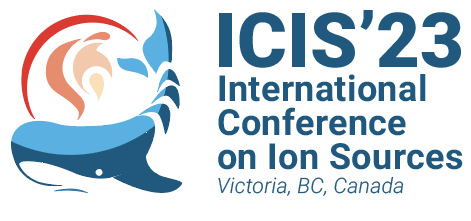Speaker
Description
SPES is a 2°-generation ISOL facility in the last stage of construction in INFN-LNL, Italy. One of the many developmental activities carried out inside SPES project is a thermally optimized ion source (IS). The SPES surface ion source (made of Ta) was successfully tested in 2017 [1].
In the beginning of 2023, the same SPES-IS has been used to test its performance as a resonance ionization laser ion source (RILIS) at CERN-ISOLDE Offline 2 [2]. Time structure measurements (TSMs), laser resonant enhancement ratios (LERs) and efficiency test were performed to characterize the RILIS using the elements Sm and Ga.
The TSMs were made for various total ion currents (TICs), regulated by surface ionized K (to simulate ion load by contaminants). Laser ion confinement inside the IS is observed along the whole length of the IS assembly i.e., the hot cavity and the transfer line. A good proportion of the ions is produced in the transfer line which can be attributed to the “alignment system” introduced in the SPES-IS. The IS can maintain a good laser ion confinement with ease till a TIC of 1.2µA at temperatures of 2000°C and above. Also, TSMs were performed for reverse polarized IS at 2000°C.
LER measurements were performed in a similar approach. No significant changes in the ratio values are observed for Sm while varying the TIC for IS temperatures at 2000°C (LER= 8.0-9.6) and 2200°C (LER= 4.9-5.3). However, at 1800°C, the LER shows an initial high value of 33 at a very low TIC and drops rapidly to a value of 8.3 at TIC of about 230 nA.
The study showed a clear dependency of the laser ion confinement on the factors: IS temperature (which directly links to thermionic electron emission), positive ion density and possibly also the neutrals. Moreover, the IS clearly exhibited high thermal stability and endurance during the whole campaign over two weeks with multiple heating and cooling cycles.
[1] http://dx.doi.org/10.1063/1.4998246
[2] https://doi.org/10.1016/j.nimb.2019.07.016
| Funding Agency | SPES, INFN Italy; CERN; FWO-Vlaanderen, Begium |
|---|---|
| Email Address | Khwairakpam@lnl.infn.it |
| I have read the Code of Conduct to attend ICIS2023. | Yes |
| Presenter if not the submitter of this abstract | Omorjit Singh Khwairakpam |

